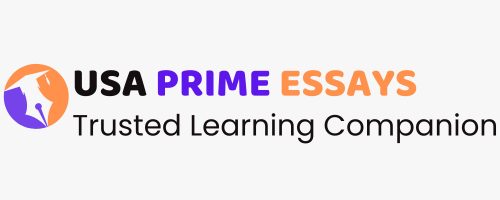1. Choose a pharmacological agent that has been on the market less than 5 years.
2. Research the literature and obtain two to three resources for current, evidence-based information related to the
pharmacological agent.
3. Develop a teaching brochure and one page paper following these guidelines.
a. Brochure
• Key/Relevant Drug Information (30 points/30%)
o DrugClass
o Mechanism of Action
o DrugAdministrationandDosage
o DrugInteractions
o Labeffects/interference
o Special Considerations
o Potential Side Effects/Adverse Effects/Toxicities
• Patient Education Considerations (35 points/35%) o NursingManagement
o PatientEducationConsiderations
o PatientAssessment
o SideEffects/AdverseEffects/Toxicities
o Special considerations
• Visual Effects/Creativity (10 points/10%)
o Developed per the required standard
o Appropriate for the intended audience
o Flesch-Kincaid reading level seventh grade or lower o Graphics enhance the purpose of the brochure
o Brochure is visually appealing
Expert Solution Preview
Introduction: For this assignment, I have chosen the pharmacological agent “Trintellix,” which was approved by the FDA in 2013 for the treatment of major depressive disorder.
1. What is Trintellix?
Trintellix, also known as vortioxetine, is a serotonin modulator and stimulator that is used for the treatment of major depressive disorder in adults. It is manufactured by Takeda Pharmaceuticals.
2. What are the current evidence-based resources for Trintellix?
– The American Society of Health-System Pharmacists (ASHP) provides evidence-based information on Trintellix, including its pharmacology, indications, and dosing recommendations.
– The National Institute for Health and Care Excellence (NICE) also offers guidance on the use of Trintellix in major depressive disorder, including information on its efficacy and potential adverse effects.
– A recent study published in the journal Psychiatry Research found that Trintellix was effective in reducing depressive symptoms in patients with major depressive disorder, with a favorable safety profile.
3. How to develop a teaching brochure and a one-page paper on Trintellix?
a. Brochure:
• Key/Relevant Drug Information (30 points/30%)
– Drug Class: Serotonin modulator and stimulator
– Mechanism of Action: Enhances serotonin levels in the brain
– Drug Administration and Dosage: Usually started at 10 mg daily, can be increased to 20 mg
– Drug Interactions: Can interact with other serotonergic drugs, such as SSRIs, SNRIs, and triptans
– Lab effects/interference: None reported
– Special Considerations: Should be used with caution in patients with hepatic impairment
– Potential Side Effects/Adverse Effects/Toxicities: May cause nausea, diarrhea, and sexual dysfunction
• Patient Education Considerations (35 points/35%)
– Nursing Management: Monitor for side effects and assess for treatment response
– Patient Education Considerations: Take Trintellix as directed, do not abruptly stop taking the medication, avoid alcohol and other serotonergic drugs
– Patient Assessment: Monitor for treatment response and adverse effects
– Side Effects/Adverse Effects/Toxicities: Report any unusual symptoms to a healthcare provider
– Special Considerations: Trintellix may increase the risk of suicidal thoughts, especially in young adults
• Visual Effects/Creativity (10 points/10%)
– Developed per the required standard
– Appropriate for the intended audience
– Flesch-Kincaid reading level seventh grade or lower
– Graphics enhance the purpose of the brochure
– Brochure is visually appealing
b. One-page paper:
Trintellix is a serotonin modulator and stimulator that is used for the treatment of major depressive disorder in adults. It is started at a dose of 10 mg per day and can be increased to 20 mg per day. Trintellix works by enhancing serotonin levels in the brain. It should be used with caution in patients with hepatic impairment and can interact with other serotonergic drugs, such as SSRIs, SNRIs, and triptans.
The most common side effects of Trintellix are nausea, diarrhea, and sexual dysfunction. Patients should be educated to take Trintellix as directed, not to abruptly stop taking the medication, and to avoid alcohol and other serotonergic drugs. They should report any unusual symptoms to their healthcare provider.
Trintellix may increase the risk of suicidal thoughts, especially in young adults. Therefore, patients should be monitored for treatment response and adverse effects. Nursing management should include monitoring for side effects and assessing for treatment response.
In conclusion, Trintellix is a new pharmacological agent that has been approved for the treatment of major depressive disorder. It has a favorable safety profile and has been shown to be effective in reducing depressive symptoms. However, patients should be educated on the potential side effects and special considerations associated with the medication.




